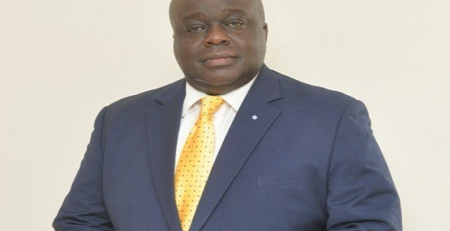Regulate high lending rates – IEA urges BoG
The Institute of Economic Affairs (IEA) has asked the Bank of Ghana (BoG) to regulate high lending rates in the country.
The suggestion stems from the IEA’s belief that the use of moral suasion to get banks to reduce their lending rates has proved to be ineffective over the years, hence the need for a regulated regime.
But the Ghana Association of Bankers (GAB) and an economist disagree with the suggestion because it will hurt the economy.
The association, therefore, wants the country to tread cautiously on discussions about capping lending rates.
Speaking at a forum organised by the IEA on how to address high interest rates in the country in Accra yesterday, the Director of Research at the institute, Dr John Kwakye, said a regulated regime would force the hands of the banks to follow the policy rate more closely and keep lending rates within bounds.
“A first scenario, and possibly the more manageable one, will be to impose a ceiling of five percentage points on the spread between lending rates and the policy rate,” he said.
President’s call
The forum, which was on the theme: “High lending rates in Ghana: What is the solution?”, was organised on the back of a recent call by President Nana Addo Dankwa Akufo-Addo for the central bank to do something about the high interest rates in the country.
At the swearing in of the new board of the BoG, the President tasked the members to help bring down high interest rates in the country.
He said it was not right for the spread between lending rates and the policy rate of the BoG to remain high.
The central bank’s policy rate currently stands at 13.5 per cent, with government’s 91-day and 182-day Treasury bills also priced at 12.5 and 13.4 per cent, respectively.
The average lending rate charged by banks in the country, however, stands at 21 per cent.
The difference between the interest banks offer on deposits and what they charge on advanced funds (loans) is known as the spread.

Another way
Dr Kwakye said another method the BoG could use to control the high lending rates and a wide spread was to introduce a rule whereby the spread maintained by any bank would be equated to the primary reserve ratio of the bank.
“This rule will be an incentive for banks to keep the spread at a minimum,” he said.
Tread cautiously
Also speaking at the forum, the Chief Executive Officer (CEO) of the GAB, Mr John Awuah, said such a policy would hurt the economy badly, lead to a reduction in credit creation and also squeeze liquidity.
“We should never encourage this discussion as a country,” he said.
Mr Awuah noted that the only country that could be cited in Africa for introducing a cap on interest rates was Kenya in 2016, but it did a U-turn in 2019 and went back to free market-determined interest rates.
“It has not worked anywhere and we should be very careful not to be pushing such an agenda,” he said.
Default rates
Furthermore, Mr Awuah pointed out that banks in the country were also hugely concerned about high lending rates because they believed higher lending rates led to higher default rates.
“If the interest is not affordable, the propensity of the customer to default is higher and that becomes a cost to the bank. With a non-performing loans ratio at 17 per cent, it is in the interest of every bank to have lower lending rates,” he argued.
Commenting on the spread among lending rates, treasury bills and the policy rate, Mr Awuah noted that while the treasury bill rates were for 91 days and 182 days, people did not borrow from banks at a tenor of three months or six months.
“People take loans for two to five years, so on the yield curve, your comparator is not the treasury bill benchmark or the reference rate, which is an interplay among the T-bill, the interbank lending rate and the policy rate, which are all short-term instruments.
“The government is borrowing for five years at a rate of 18.5 per cent; if I am a bank and you have a deposit with me or you are a shareholder, why do you think if someone wants five-year money from me I should lend it below the 18.5 per cent,” he asked.
Counter-productive
In an interview with the Daily Graphic, an economist and lecturer at the Academic City University, Mr Eugene Bawalle, said regulating interest rates was not the way to go.
Rather, he said, the government must, together with players in the banking industry, look at how to control the factors that affected lending rates in the country.
He cited some of the factors as the high non-performing loan ratio, inflation and exchange rate depreciation.
Mr Bawalle noted that a regulated regime would be counter-productive and might lead banks not lending to the private sector.
“The idea that if the policy rate is reduced, it must necessarily lead to a reduction in lending rates is not entirely viable. There are several other factors that affect lending rates,” he said.
Background
The debate on high interest rates and its spread has persisted since the early 2000s.
While industry players often call for the BoG to intervene to ensure the rates come down and the spread closes, bankers and sometimes academicians, have posited that any regulation would be counter-productive.
The debates have led to interventions such as the creation of the credit reference regime, the collateral registry and the government turning to the international market to borrow, in order to free funds for domestic businesses.
Source: Daily Graphic














Leave a Reply